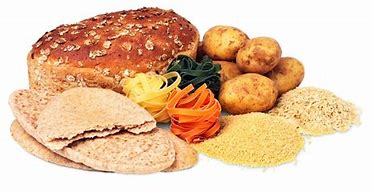
It is important to recognise what type of high-intensity exercise requires increased carbohydrate consumption. For example, a mixed meal (containing carbohydrates, protein and fat) will provide sufficient energy for a 60 minute weight session however an increase in carbohydrates is recommended for a 60-90 minute pitch session.
So what can you do to improve variety?
- Opt for brown/whole meal alternatives where possible as these contain more fibre. This will help to increase the nutrient density of your meal.
- Alter your sources – are you a pasta/bread fiend? While pasta and bread are both excellent sources of carbohydrates they are not as nutrient dense as some of the other choices e.g rice/oats. Switching up your sources every so often means you get different nutrients. For example, sweet potato contains more vitamin A than quinoa, which has more iron per 100g.
Despite what various online sources and the media might say, carbohydrates are not the enemy and should be included as part of a well-balanced diet. Intake will be dictated by activity levels – opt for extra fruit & veg on your plate if you have a more sedentary lifestyle!

